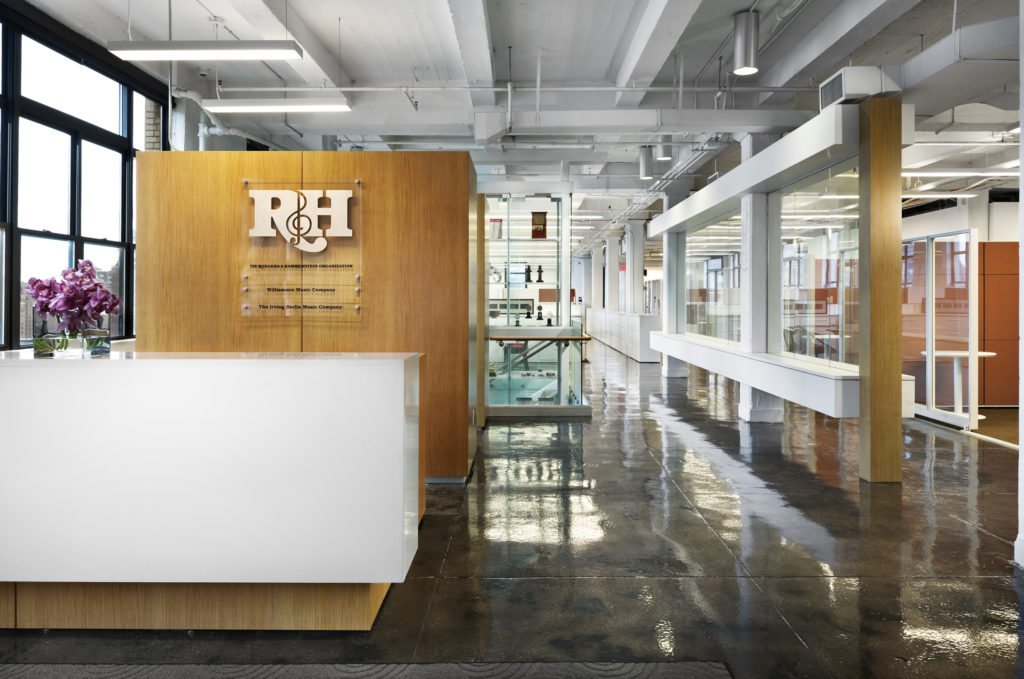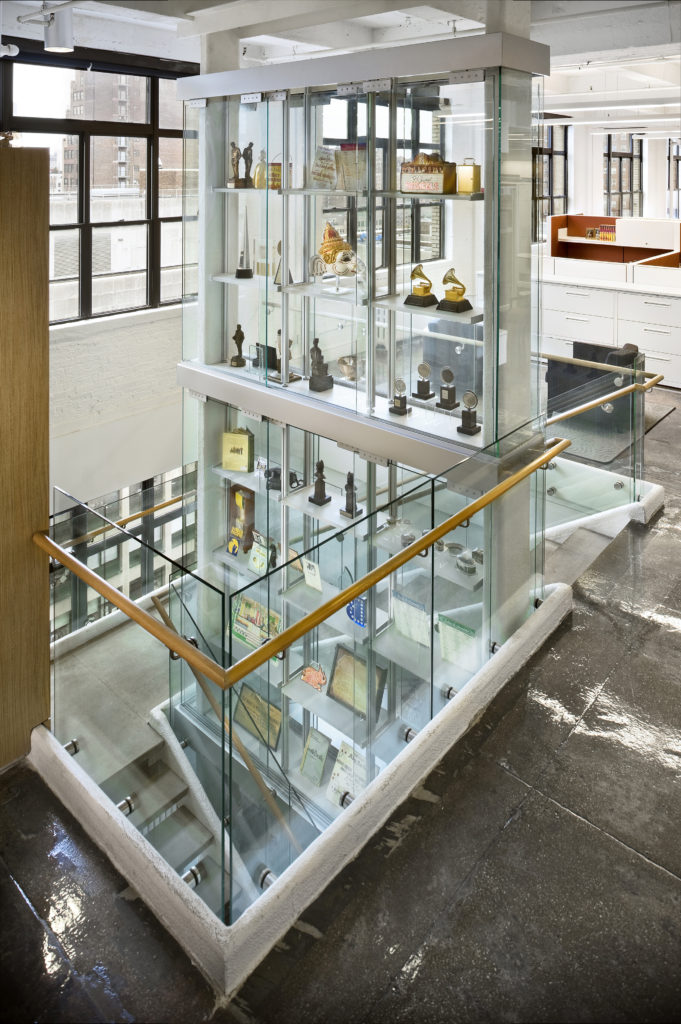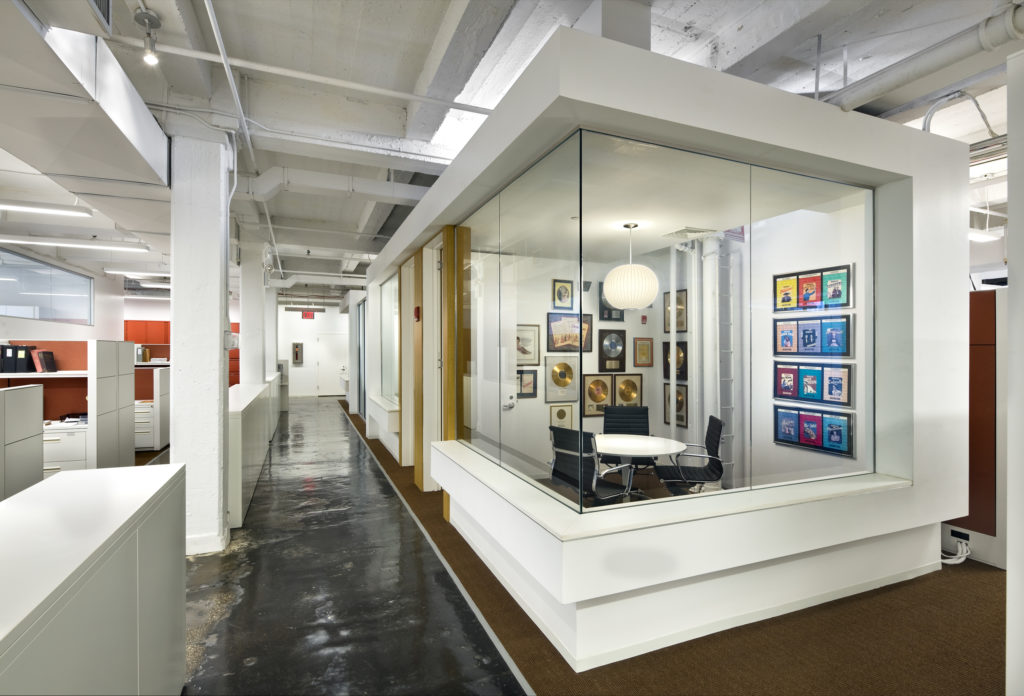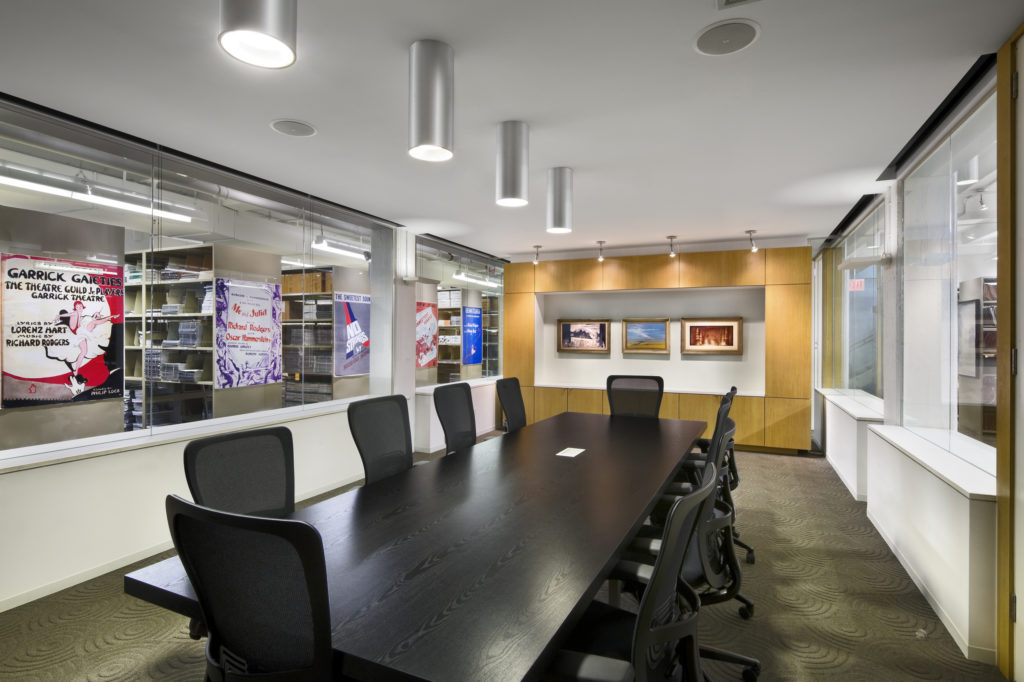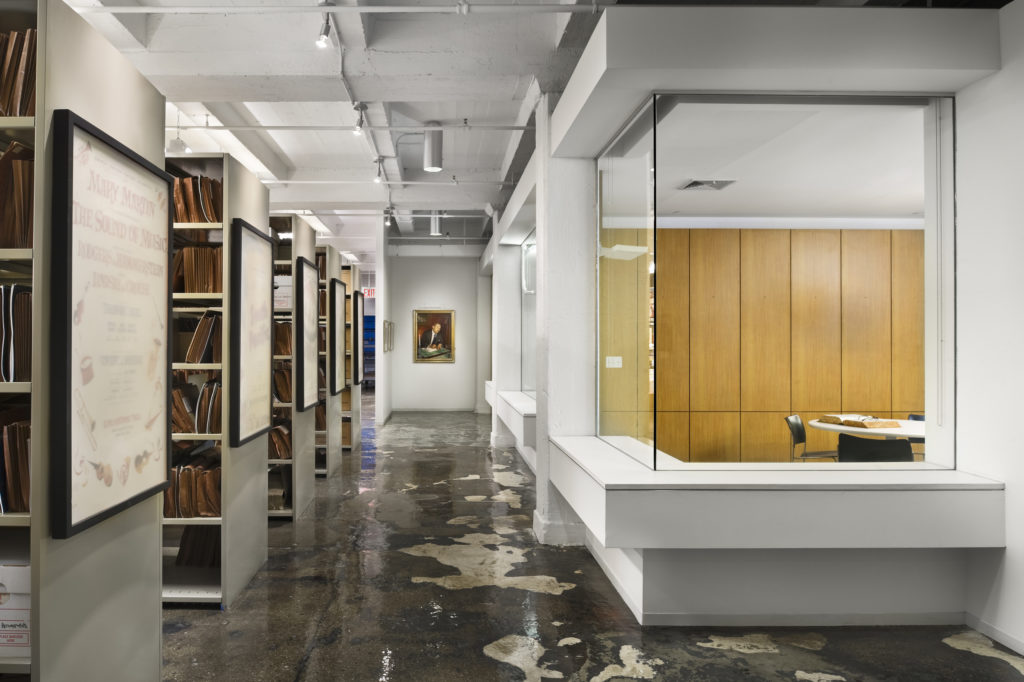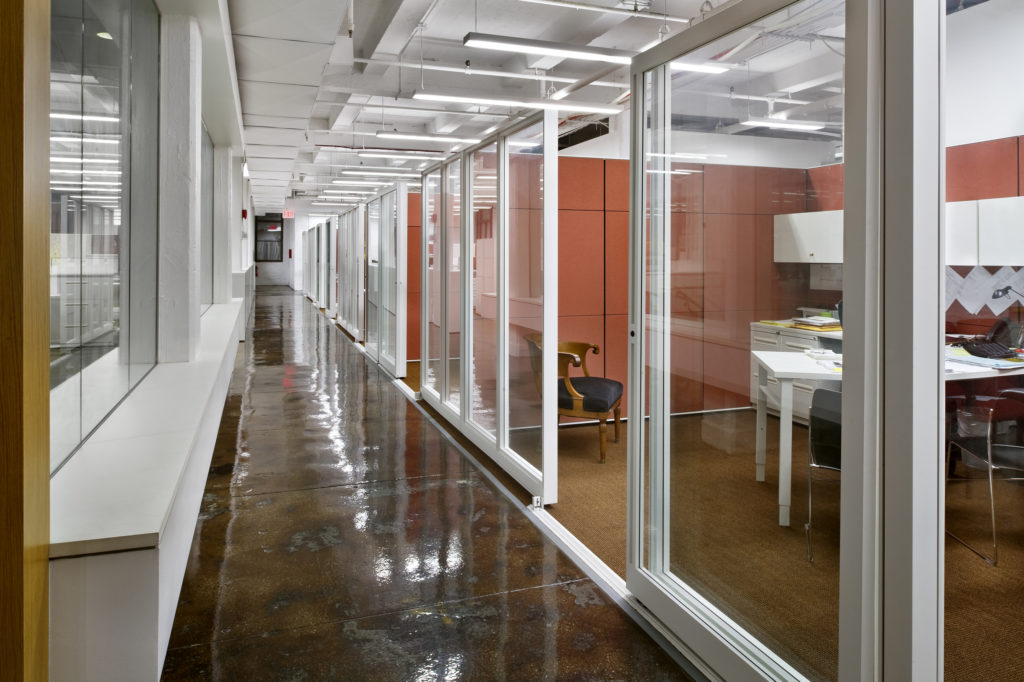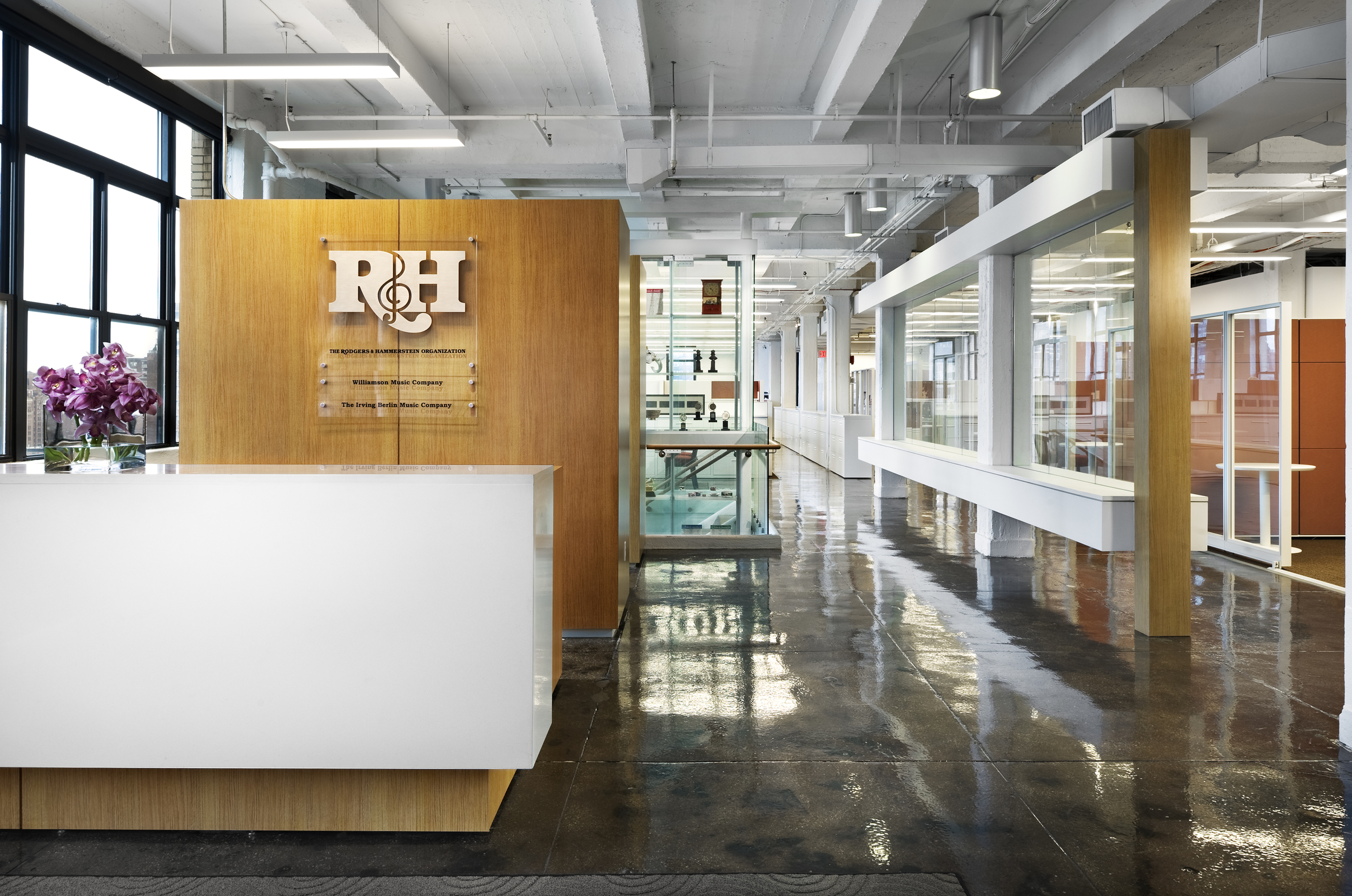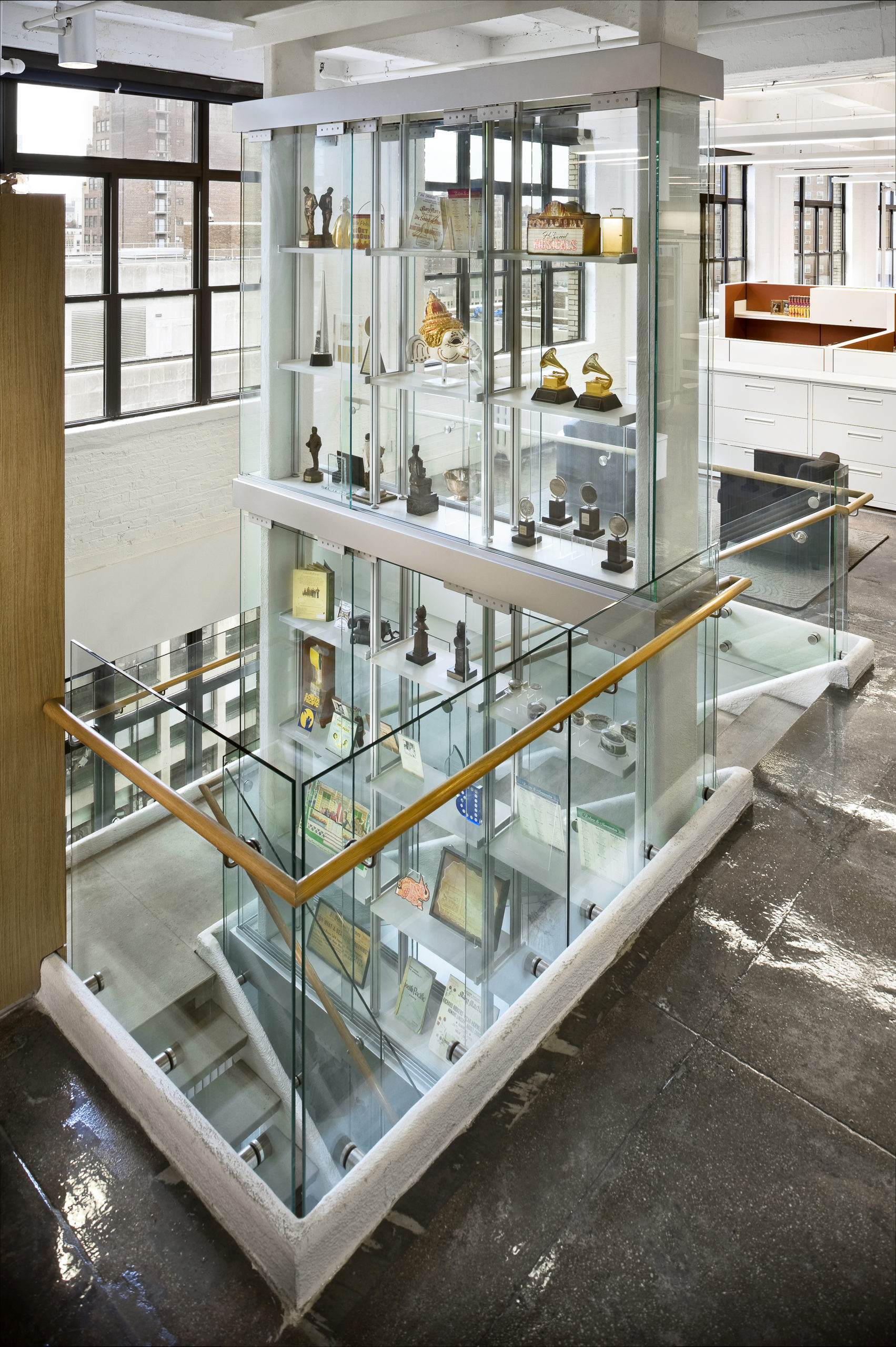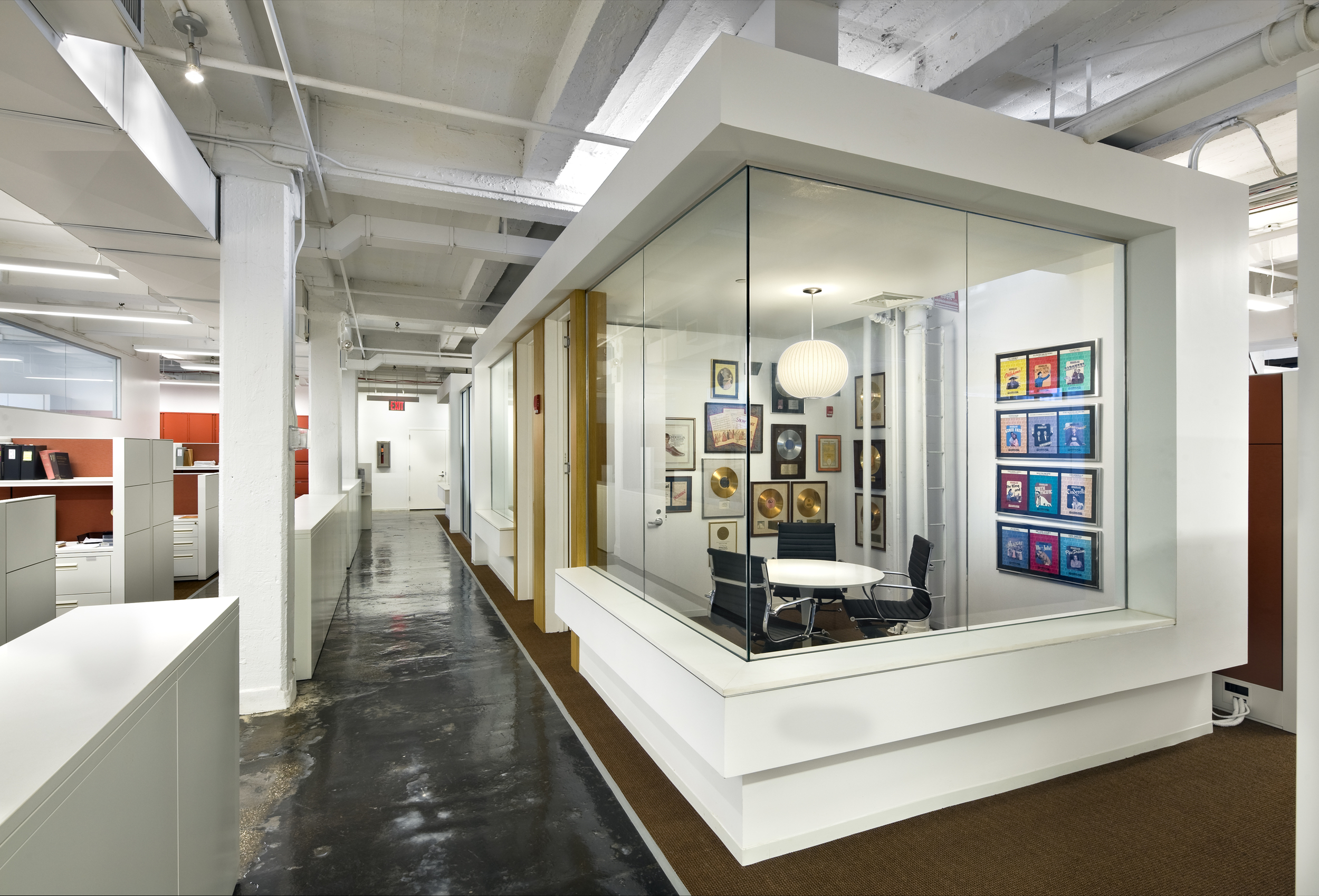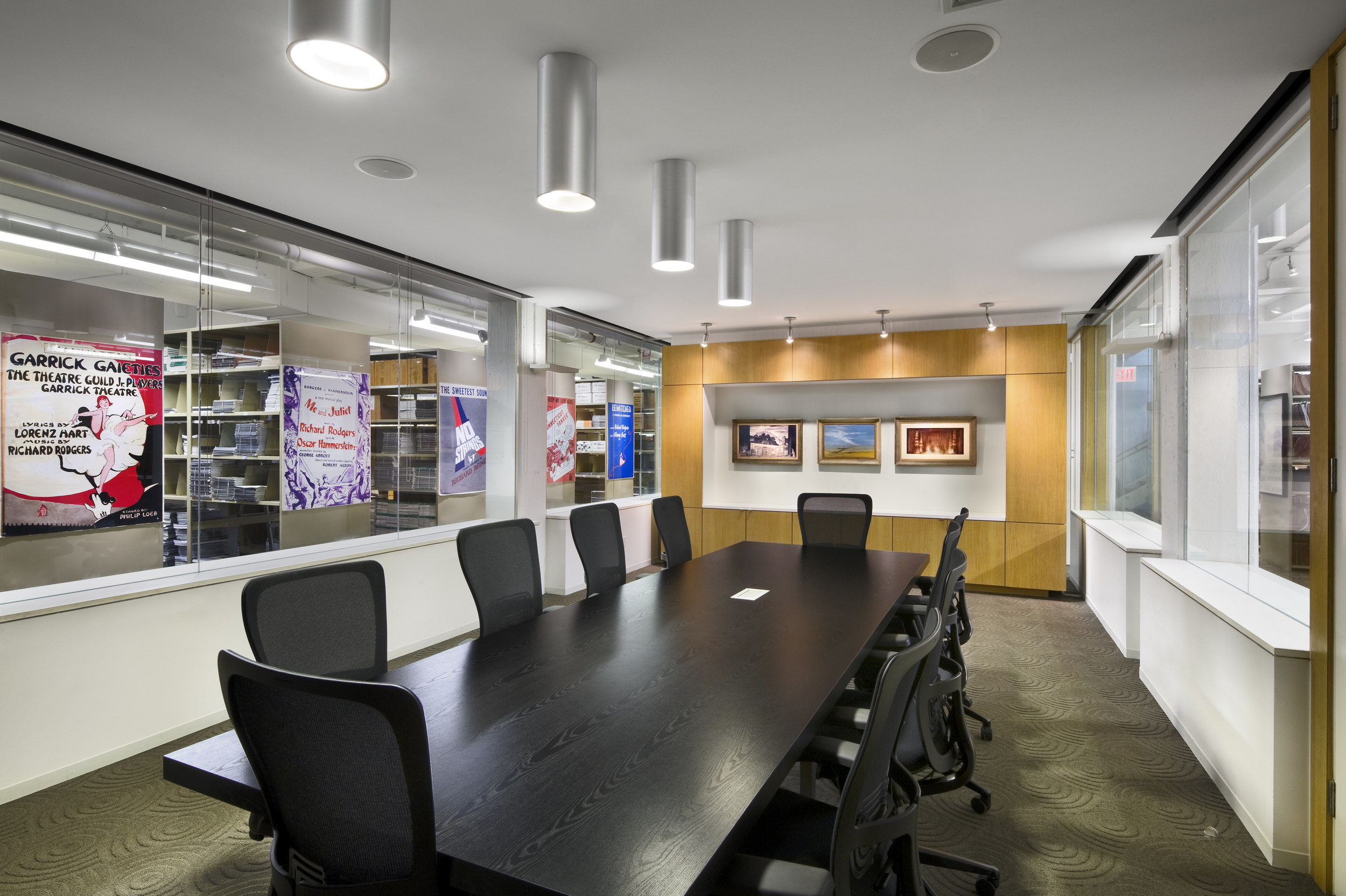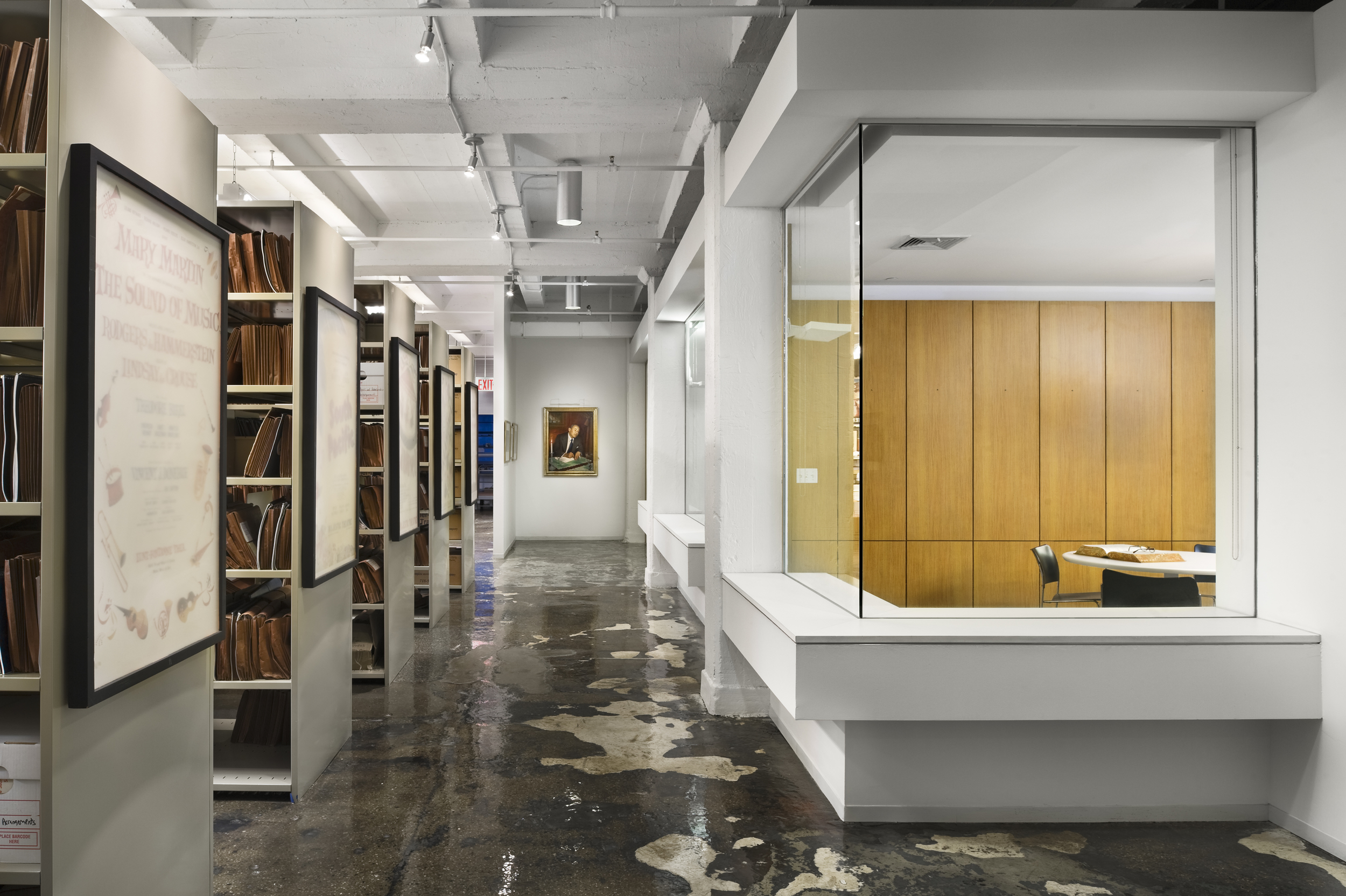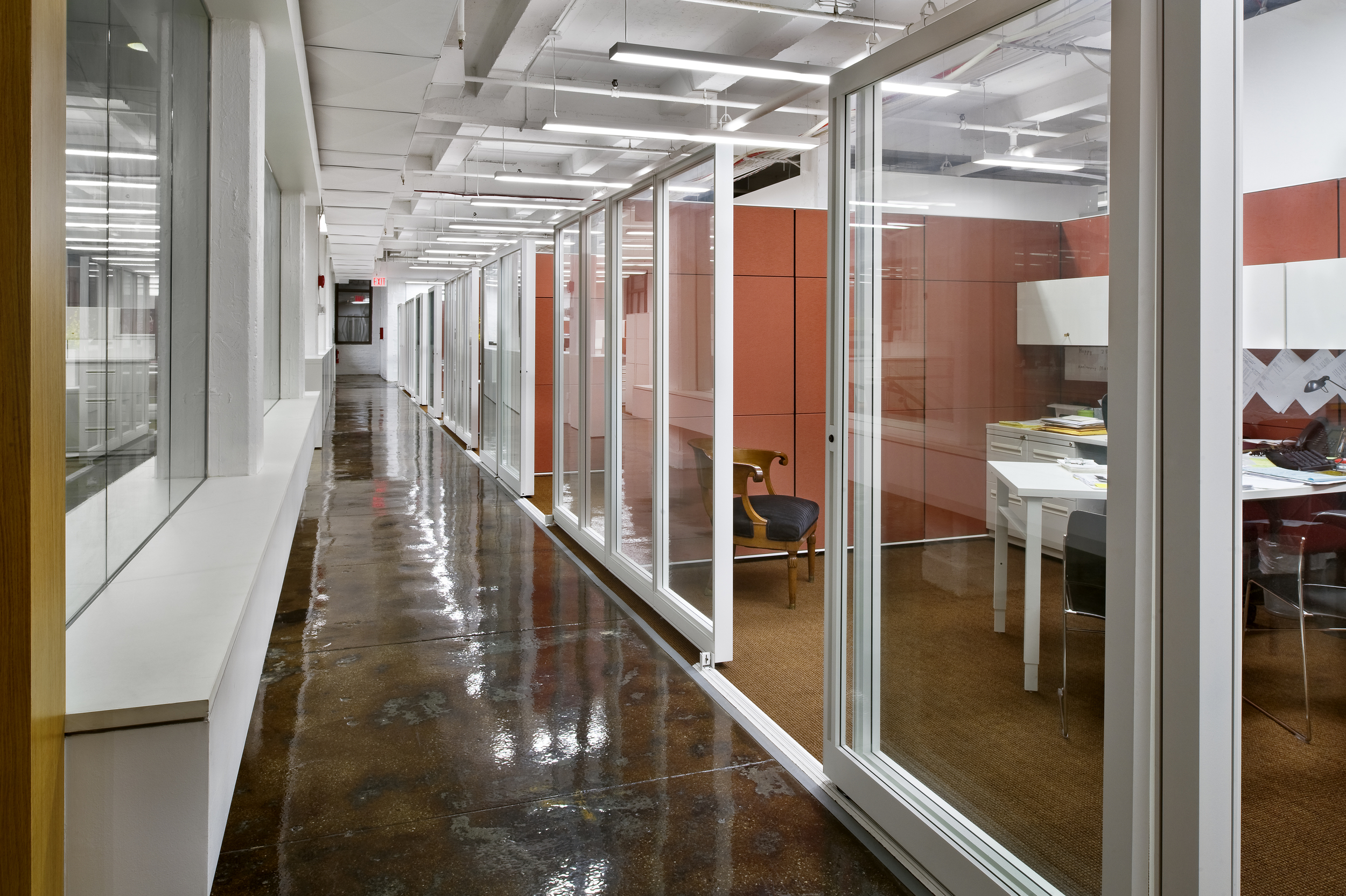Rodgers and Hammerstein
Manhattan, NY
Founded by Richard Rodgers and Oscar Hammerstein II over sixty years ago, The Rodgers & Hammerstein Organization includes theatrical, concert and music publishing divisions that represent some of Broadway’s best-known creators and their work.
At the time of this commission, the company was housed in two separate Manhattan locations. The executive offices overlooked Bryant Park while the customer service and shipping/receiving operations were on West 28th Street, on the 11th floor of a warehouse building across from the Fashion Institute of Technology. Faced with fiscal and logistical real estate decisions that would affect both locations, the executive team determined that the one overarching goal was to bring all of the company’s people under one roof.
After new owners took over the West 28th Street building, the 10th floor became available, providing the opportunity to design a new space that would occupy the 10th and 11th floors and encompass a total of 24,000 square feet.
Detailed interviews with each and every employee provided a framework that supported the transition from a perimeter private office culture of solid walls and closed doors to an open office plan with workstations and shared ‘huddle’ rooms.
As the two program elements that would see the most public and internal use, the main conference space and library are inserted within the warehouse stacks on the 10th floor as the jewel at the end of a circulation spine that begins at the 11th floor elevator lobby and travels down through a new communicating stair that wraps around a glass display tower that organizes the awards and memorabilia that was previously scattered about. These transparent conference rooms and libraries showcase the surrounding stacks that hold the scores and scripts as the true crux of the R&H business.
Through innovative planning, the design solution enhances the fact that two previously equal halves are now a single whole, showcasing R&H’s remarkable history, while looking to the future, and improving the functionality of each individual’s and each department’s everyday operations.
At the time of this commission, the company was housed in two separate Manhattan locations. The executive offices overlooked Bryant Park while the customer service and shipping/receiving operations were on West 28th Street, on the 11th floor of a warehouse building across from the Fashion Institute of Technology. Faced with fiscal and logistical real estate decisions that would affect both locations, the executive team determined that the one overarching goal was to bring all of the company’s people under one roof.
After new owners took over the West 28th Street building, the 10th floor became available, providing the opportunity to design a new space that would occupy the 10th and 11th floors and encompass a total of 24,000 square feet.
Detailed interviews with each and every employee provided a framework that supported the transition from a perimeter private office culture of solid walls and closed doors to an open office plan with workstations and shared ‘huddle’ rooms.
As the two program elements that would see the most public and internal use, the main conference space and library are inserted within the warehouse stacks on the 10th floor as the jewel at the end of a circulation spine that begins at the 11th floor elevator lobby and travels down through a new communicating stair that wraps around a glass display tower that organizes the awards and memorabilia that was previously scattered about. These transparent conference rooms and libraries showcase the surrounding stacks that hold the scores and scripts as the true crux of the R&H business.
Through innovative planning, the design solution enhances the fact that two previously equal halves are now a single whole, showcasing R&H’s remarkable history, while looking to the future, and improving the functionality of each individual’s and each department’s everyday operations.

